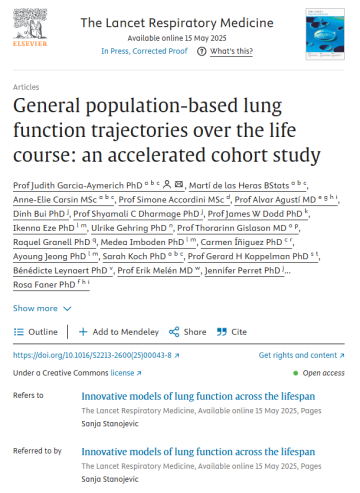How does lung function change over the course of life?
- 16 May 2025
A new study has found out how people’s lung function varies over the course of life. The study, published in the Lancet Respiratory Medicine, was performed by a large international collaboration including Bristol BRC researchers.
How well a person’s lungs work is an important measure of how healthy they are. But exactly how and when lung function changes throughout life has been unclear.
This study showed that:
- Lung function increases rapidly until around age 13
- It increases more slowly after age 13 until it peaks at around age 20 in females and 23-26 in males
- It then decreases
The study found that lung function did not remain steady after peaking, before decreasing.
Knowing how and when people’s lung function is expected to change during life will help medical staff prevent and treat lung problems.
To find this information, the researchers looked at measurements from over 30,000 people taken during eight child and adult studies from Europe and Australia. The people studied were aged 4-82 and roughly half were female.
The study looked at two measures of lung function:
- Forced expiratory volume in one second, shortened to FEV1, is the volume of air that can be forcibly blown out in the first second after breathing in
- Forced vital capacity, or FVC, is the total volume of air that can be forcibly blown out after breathing in
Both measures of lung function followed a similar pattern.
James Dodd, Professor and Honorary Consultant in Respiratory Medicine at the University of Bristol, said:
“We are delighted to have worked closely with our European colleagues on this important study, using valuable data from the Children of the 90s cohort in Bristol. This collaboration highlights the power of long-term population studies in advancing our understanding of lung health.
“These findings reinforce that lung function in adulthood is significantly shaped by early-life factors, influencing the risk of chronic respiratory diseases. By emphasizing the importance of early and proactive lung health monitoring, this study provides a crucial framework for future research, clinical guidelines, and public health policies aimed at preventing lung disease before it starts.”
